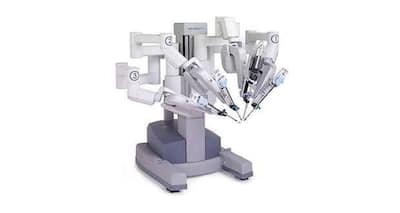
With advances in haptic feedback, machine learning/artificial intelligence (AI) and training, robotics will continue transforming modern surgery over the coming years.
Robotic surgery has evolved and is used in various surgical specialities, including Orthopaedics, urology, gynaecology, cardiothoracic, Gastrointestinal and general surgery. There have been significant advancements in robotic surgery in the past few years. One of the most well-known and widely used mechanical surgical systems is the Da Vinci Surgical System, developed by Intuitive Surgical. The latest version of the system, the Da Vinci Xi, is designed to be more versatile and easier to use with comprehensive benefits. Breakthroughs in surgery explained by Sr. Consultant Surgical Gastroenterology, Dr Vijaykumar C Bada, HPB, Bariatric & Robotic Sciences. Clinical Director, Yashoda Hospitals, Hyderabad.
VISION
Views in laparoscopic surgery have constantly challenged the surgeon, who must make inferences about spatial relationships to transform a two-dimensional image into three dimensions mentally. The da Vinci robots address this issue by immersing the surgeon in a 3D-operating field using binocular endoscopic vision with 10 15x magnification. By visualising surgical planes in greater detail and providing views that are impossible in traditional laparoscopic surgery, robotic surgery has improved surgeons’ technical abilities, appreciation of crucial structures and patient outcomes.
Benefits Of Robotic Surgery
With advances in haptic feedback, machine learning/artificial intelligence (AI) and training, robotics will continue transforming modern surgery over the coming years.
CONTROL
Furthermore, the fulcrum effect with laparoscopic surgery, where the surgeon’s hand, is eliminated in robotic surgery.
READ RELATED: Why You Should Eat Macadamia Nuts Daily?
- The da Vinci system uses robotic technology to eliminate physiological tremors, lending robotic surgeons much greater control in minimally invasive settings and reducing the risk of iatrogenic injury. Combined with enhanced ergonomics (i.e. a seated surgeon) and motion scaling, robotic assistance can facilitate more efficient, calmer and safer laparoscopic surgery.
- Fourth-generation da Vinci surgical systems continue to advance minimally invasive surgery (MIS) across a broad spectrum of surgical procedures. Flexible configurations, upgradable architecture, and a consistent interface distinguish it from other robotic platforms.
Future Of Robotics In India
The future of robotic surgery is promising, with various potential advancements on the horizon. India will soon be a significant centre for adopting robotics. Improvements in Cost, Insurance regulations, awareness, training of surgeons and availability will change the outlook of patient care in the country.
- AI integration: Integrating artificial intelligence and machine learning into robotic surgery systems allows for more personalised and efficient surgical procedures.
- New robot platforms: Continued development of more advanced and versatile robotic surgical systems.
- Advancements in virtual reality and augmented reality technologies could enhance the surgeon’s ability to visualise and manipulate surgical sites.
Total Wellness is now just a click away.
Follow us on
Don’t Miss Out on the Latest Updates.
Subscribe to Our Newsletter Today!
window.addEventListener(‘load’, (event) => {
$(‘#commentbtn’).on(“click”,function(){
(function(d, s, id) { var js, fjs = d.getElementsByTagName(s)[0]; if (d.getElementById(id)) return; js = d.createElement(s); js.id = id; js.src = “//connect.facebook.net/en_US/sdk.js#xfbml=1&version=v2.3”; fjs.parentNode.insertBefore(js, fjs);}(document, ‘script’, ‘facebook-jssdk’));
$(“.cmntbox”).toggle();
});
});








